At Mazzy's 18 month check-up, her pediatrician gave us a simple directive that every parent dreads: "It's time to get rid of the pacifier."
While Boo (Mazzy's blankie) has always occupied best-friend-status, the pacifier had been more akin to a basic necessity like water. Mazzy sucked on that thing roughly 70% of the time and never went to sleep without it. Plus it was my go-to solution to shut her up in almost any situation. I honestly didn't know who was more unprepared to give it up— Mazzy or myself.
With visions of tantrums in Mel Gibson proportions, I devised a plan involving a transitional period where Mazzy was allowed the pacifier for naptimes and bedtime but denied it while awake. I tried my best to distract Mazzy during the day while I mentally prepared for the battle of a lifetime come 7:30pm.
Then— a weird thing happened. After just ONE AFTERNOON of repeatedly saying "no pacifier", Mazzy didn't even ask for it at bedtime. While reading her a story, I found myself covertly burying the thing under a chair cushion so an accidental viewing wouldn't end her sudden case of baby amnesia.
Once Mazzy went to sleep without the pacifier, that was it. All pacifiers were put in the trash and our only directive was to stick to our guns. Which we did. When Mazzy requested the pacifier the next morning, we told her no and gave her a frozen teething toy to chomp on instead. By the end of the day, she appeared to have forgotten all about it.
It's been about a month now and although, I do find that it is harder to get Mazzy to settle down and go to sleep, she has still not asked for it. In fact, today, an old pacifier fell out of the diaper bag by accident. Mazzy picked it up, stuck it in her mouth, and then promptly handed it back to me.
TASK COMPLETE.
I'm not going to assume that everybody has it this easy. God knows, transitioning from a bottle to a cup was WAY harder. I'm curious about everyone else's experiences— have you tried to get rid of the pacifer yet? Were you successful? Are you as big a fan of "cold turkey" as I am?
—————————–
Dr. B (our resident early childhood development specialist) says that once a kid turns two, transitioning off a comfort item "cold turkey" becomes less of an option (which is why you should get rid of the pacifier pronto). Today's question is from the mom of a soon-to-be four-year-old boy who still drinks from a sippy cup and calls it "baba".
Dear Dr. B,
My nearly 4 year-old son often asks for his "baba" — which is basically heated up milk in a sippy cup. He drinks other things like the occasional juice box and water out of a regular cup, but at least a few times a day, he declares "I want baba" because he finds it soothing. My question is… I've been telling him we'd be stopping the "baba" when he turns 4, because he'll be a "big boy." But is it really a problem for him? Or is the problem just mine?
— SLW
Dear SLW,
Almost all children rely on comforting items or routines at some point in early development and these behaviors can often turn into habits that are difficult to break. The reliance on comfort items serves an important psychological need of helping them cope with increased independence. The need of a comfort item usually lessens as a child matures, becomes more independent, and develops new ways to self-soothe.
A good rule of thumb is that if the behavior is safe and does not negatively impact a child’s health, development, or social-emotional well-being, then it is often best to wait until your child outgrows the behavior naturally or is motivated to change it.
On the other hand, some behaviors are much easier to change than we think and we make the mistake of setting our child up to think the change is a bigger deal than it needs to be.
9 Strategies to Help Reduce Reliance on Comforting Items or Behaviors:
1) Make the Behavior More Appropriate: Select one aspect of the behavior to change (e.g., the word “baba,” drinking warm milk, or the type of cup). Gradually introduce another more appropriate behavior and prompt your child to use it. If your child asks for “baba” prompt him to say, something more appropriate such as “warm milk.”
2) Offer Fun Alternatives as Choices: Offer your child a choice between the requested item and a novel item. If your child asks for his baba, give him the choice between his baba and a new drink; or a cool big boy cup with a straw. If he doesn't choose the new item the first time, keep trying. He may change his mind.
3) Purchase New Items as Incentives: Go with your child to purchase a new similar item that is more age appropriate to replace the old item. Find an item that matches your child’s interest such as a cup with their favorite cartoon character on it to replace the baba, an ice pop in their favorite flavor to suck on when they get the urge for their pacifier, or an intricate hands-on toy that your child can play at times when he is more likely to suck his thumb.
4) Teach a New Behavior: It is easier for children to change behaviors, when they know what to do in its place. Teach your child to seek comfort in other ways. You can select things to teach on your own or brainstorm these ideas together. For instance, you can teach him how to seek comfort by asking for a hug, to sit on your lap, or to read a story together. For self-soothing, you may want to identify a special toy he can hold, cuddle, or play with or a soothing song he could listen to.
5) Use Positive Language: For some children, the word “no” is a trigger for challenging behavior. Instead of saying, “no,” use positive language. Respond to your child’s request for a comforting item in a positive way. If your child asks for his “baba,” say, “You want milk. Let’s go get it and put it in your big boy cup.”
6) Encourage Comparison: Help your child to reflect on his habit in a fun way. Talk about special characters that your child likes such as Spiderman or SpongeBob and subtly point out similarities and differences between your child and their favorite characters. Say, “Did you know that Spiderman’s favorite drink is cold milk? I wonder what he puts it in. Do you think he drinks from a baba or a cup?
7) Use Praise and Rewards: Provide praise and encouragement when your child a) uses more age appropriate self-soothing techniques; b) seeks comfort in new ways; c) requests the comfort item but then accepts that it is no longer available; d) chooses to use a new more appropriate item or behavior; and e) does something incompatible with the comforting behavior such as drinking juice or drinking from a cup.
8) Set Limits: Explain that certain items or behaviors are only acceptable at specific time or places. You may decide that drinking from a “baba” is only acceptable at bedtime or when your child is at home. Instead of telling your child they can’t have the item when they ask for it which may trigger a meltdown, tell them when the item will be available.
9) Quit Cold Turkey: Simply taking away the item may be an option for very young children under age 2, for behaviors that are unhealthy and have the potential to impact development, and when other methods have been tried and are unsuccessful. In some cases, gradual weaning can be more difficult for children because they don’t understand the limits being set on the behavior which leads them to become very frustrated more often. By taking the item away entirely, the child is quickly forced to learn how to cope with the loss, as wellas alternative ways to satisfy the same needs. If you use this method, it is important to stick with it and not give in. When you give into a tantrum, the child learns that tantrums are effective in getting what they want and they are more likely to use them.
Finally, children are much more resilient than we often give them credit for and we are often surprised when something we thought would be very challenging for them is forgotten after a few days of a consistent, “No more baba.” Young children are also very intuitive and pick up on very subtle cues from the people they depend on most, their parents. When parents set the tone that change is okay along with positive reassurance that certain items are no longer needed, children are likely to follow their lead with minimal difficulty.
Best of luck,
— Dr. B





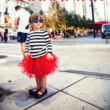
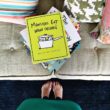

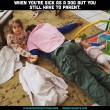




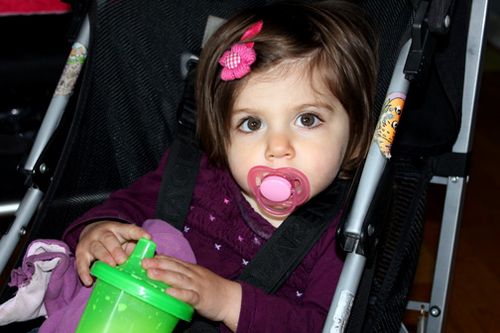
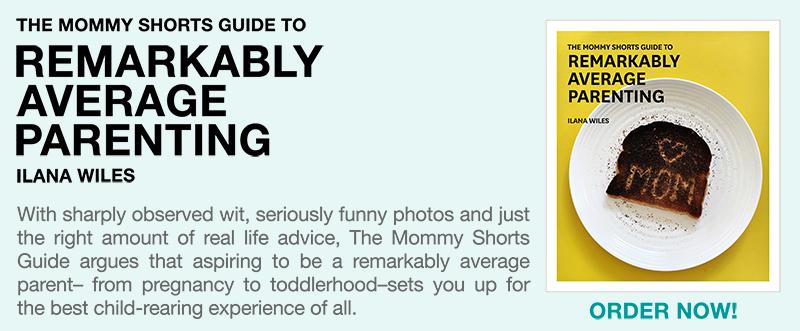
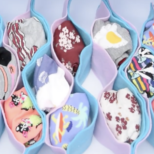
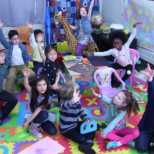


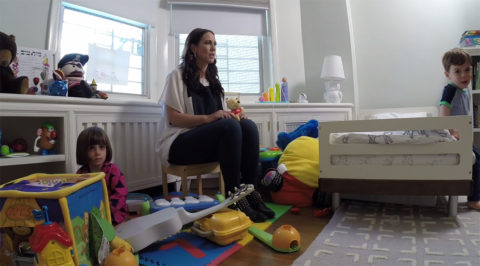






Ilana, congratulations on Operation Pacifier! I’ve recently read about someone else whose daughter gave up the pacifier only after one day of it being taken away. I guess we don’t give children enough credit eh?
It was the same with my weaning (OMG yes we have weaned from the boob!) and the co-sleeping (OMG yes he is sleeping in his own bed!). I hesitated and was reluctant to implement all the changes required to wean him off the boob and me (I was like his Boo when it comes to sleep), as I thought it’d be really hard. Hard for both him and me.
Turns out, he was more ready than I expected and there were less tears and drama than I’d dreamed up in my head. Such a relief.
Dr. B, thank you for your sound advice. I imagine I can use some of these tricks…er, I mean, tips when the time comes for my dear child to give something up when he’s older.
I initiated Operation Bye Bye Binky a few months ago. Had put it off as long as possible b/c I was sure it would be a nightmare. It was not quite as easy as your experience. We had a couple of rough days. But after 3, it was done. Just like that. Although, SB gave up napping as a result. THAT part sucks.
yes! us too. i was AMAZED at how much easier it was than i had anticipated. i’m fairly certain that my anxiety over it contributed to jackson not wanting to give it up, but as soon as i stated simply “no more,” it was like a light clicked for him too. setting boundaries with our kiddos doesn’t have to be such a “bad cop” thing, ya know?
so glad you posted this for others to see.
i am scared to take away bink….my son only has it for naps and bedtime, so i have been using that as an excuse not to take it away, since he isn’t allowed to have it other times, but at his daycare he doesn’t have it at all, not even for naps…ugh…now i feel like a bad mom for letting him have it passed 2…
I was TERRIFIED to take away my son’s pacifier. He was somewhere between 12 and 18 months when I decided it was time. The pacifier was his FAVORITE THING but he was starting to talk around the pacifier and I was not ok with that. So we stopped sending it to daycare, no complaints. Then we hid it during the day, also no complaints. Then I decided to try no more “Uck” (as he called it) at all, not even bedtime. He asked for it around 7:30 like usual and I said “No, we’re not doing the Uck anymore.” He didn’t ask again until the next night and I repeated the same thing. He only asked for a few days, and had no problems at all transitioning. I could not believe it went that smoothly! I doubt I’ll have that kind of luck again, but yay!
Love it when that happens, always such a relief. We never had an issue with paci – he refused it starting at 3 months old. But, I feared big issues with potty training, and I was happily surprised that it was easy with him. Whew!
I know you can’t hear it but there is applause coming from over here. Thanks for sharing this Ilana. Mazzy is a true toddler rock star!!
My son was never a big pacifier baby from the get-go, which was hard when he was cranky the chance of him taking the pacifier was about 25% of the time..but it also made it so much easier to get rid of it when it was time!
This doesn’t have anything to do with your post, but I absolutely love Mazzy’s hair!
I don’t know what exactly it is that I like so much, but she always looks so adorable.
We went cold turkey. With the paci, the bottles, everything. Rip that bandaid right off!
I remember being so pleased when, at around 6 months, Ella gave up the pacifier and started sucking her fingers. Now at 2.5 she still sucks her fingers and I’m starting to wonder how I’m going to break this habit. I think it’s starting to affect her front teeth! I’m going to take her to the dentist to get some advice but I’m sure this will be much harder to deal with than a dependence on the paci.
Fortunately for me, I used my boob as a pacifier for my first two. Whenever they’d start crying in public, in goes the boob. I went cold turkey once they turned one and they were fine. I think sometimes we underestimate our children’s ability to adapt. I look at parents whose 6 year old has a bottle or sucking on a pacifier and think, man I can’t imagine if I still had to breast feed a 6 year old.
Our doctor said if we got rid of the binky by age three then the beaver teeth would go back to normal. My daughter only got the binky at bedtime and naptime so it was not a major problem to get rid of it at age 2.5 and I think her teeth are starting to look a little better already. The only drawback is now she rarely naps, which is driving me insane.
I agree, Mazzy has some awesome hair and those eyes, oh my, those eyes.
My daughter is 4 next week and still has her dummy at night time for sleep, I have no intention of taking it off her until she is ready, ive tried before saying the “garbo” took it, but at the end of the dayI see no harm, she knows it HAS to stay in her bedroom and it only for bedtime.
In regards to the lady with the child with the sippy cup of milk, I think its more important for the child to have milk then to worry about what its in. I mean its not a bottle, its a sippy cup, I still allow my daughter a sippy cup, especially when its warm things and also in a place I dont want things to be spilt.
I guess parenting it such a personal choice thing.
JEALOUS.
I’m a fan of cold turkey as well. I have a friend who’s a briber, and cold turkey seems so much easier! I know it depends on the child, too, but sometimes I think that as parents, if we make a big deal out of something, they make it into a big deal, too.
Yay Mazzy!
Our kids can really surprise us, can’t they? Congrats to Monkey on sleeping in his own bed!
No naps? That must REALLY suck. I don’t know what I’ll do when Mazzy’s naptime ends. Probably lose my mind.
Congrats on Operation Binky though!
It’s hard to feel like a bad cop when it’s for such a short period of time. But consistency is key. Make a decision, stick to it and then they are forced to adjust.
Don’t feel bad! The only reason I did it is because her doctor told me to. If he’s not using it in daycare, he must be less reliant on it then you think.
Yes! That’s exactly how it went for us. Mazzy went from requesting it hundreds of time a day to requesting it once when she woke up to not requesting it all in less than two days. It was amazing!
I think it’s only half-luck. If you don’t waffle about stuff, they will learn to adapt much quicker.
Sounds like you got a good one. I’ve heard some nightmare potty training stories…
She says thank you! It looks like a total mess if the barrette isn’t in her hair. I think that has something to do with it— organized chaos.
Exactly. You are my kind of mom.
Check out Dr. B’s post on thumbsucking— I’m sure the same stuff applies: https://www.mommyshorts.com/2011/04/mother-thumbsucker.html
If a kid still has a pacifier at 6, that’s the parents’ choice more than the kid’s.
My doctor told me to get rid of the pacifier now because it would only get harder. But I’m not sure when it starts to become a problem for their teeth.
Is a dummy a pacifier or something else? I’ve never heard that before.
Dr. B does say in her response, that if the behavior is posing no harm, then it is often best to let the child outgrow it naturally.
It’s true, every family has different parenting styles and there is no right or wrong one.
Did you have problems? Or have you not tried yet?
Cold turkey is definitely the best way to deal with Mazzy. I tried to do more of a gentle approach with sleep training and it backfired big time. She is an all or nothing kid.
My little guy is 2 and I know I should cut off his “pire” (his word for pacifier) attachment while I still can. But we’re going on vacation this week and I feel like that would be torture for both of us!
I am determined to get rid of them when we get back! But I really do fear the repercussions! (the no-nap, screaming, etc.)
My daughter drank warmed up orange juice (yes. so gross. I know) from a sippy until she was eight.
EIGHT!
She didn’t call it a baba, but still. EIGHT.
When I told her she HAD to stop, she did. But she has not had orange juice since.
Not a drop in four years.
Weird, huh?
I wonder how a child of mine got to be so strange?
My Harlo girl was exactly like Mazzy, it seems. She was 17 months and was expecting a new baby sister in two months and I wanted it to be out of her mind for when the baby got one (which the baby never took one, of course!) but one day I tried to see how she would do without it, and never mentioned it again.
Her blankies, however, will probably never be taken away. We do not allow them to come out of the house now at 2.5 years old, but they remain a staple in our family 🙂
I did the cold turkey method with my son. In the middle of the week, just after a move, and my first week on the new job. It was four nights of hell. Hindsight realizes that was not a good time to ditch the binky..
You’d like to know how to get rid of the pacifier? You have tried but failed because your kid was protesting a lot? If you’re planning pacifier weaning, you need to choose the right method. There are plenty od pacifier weaning systems, although it is essential to pick one that is appropriate for the age, and also seems easy to you and acceptable for the child.
Go with Susan Urban’s book “How to help your child give up the pacifier” (https://www.parental-love.com/shop/pacifier-weaning). Great compilation of tips and easy steps. Very successful way of dropping the pacifier.
This might be an uneasy task to do, but there is help in the world 😉 „How to help your child give up the pacifier” by Susan Urban is an extremely helpful compilation of pacifier weaning system. It is the only book you need to prepare for the task, without reading every guide separately.
https://www.parental-love.com/shop/pacifier-weaning